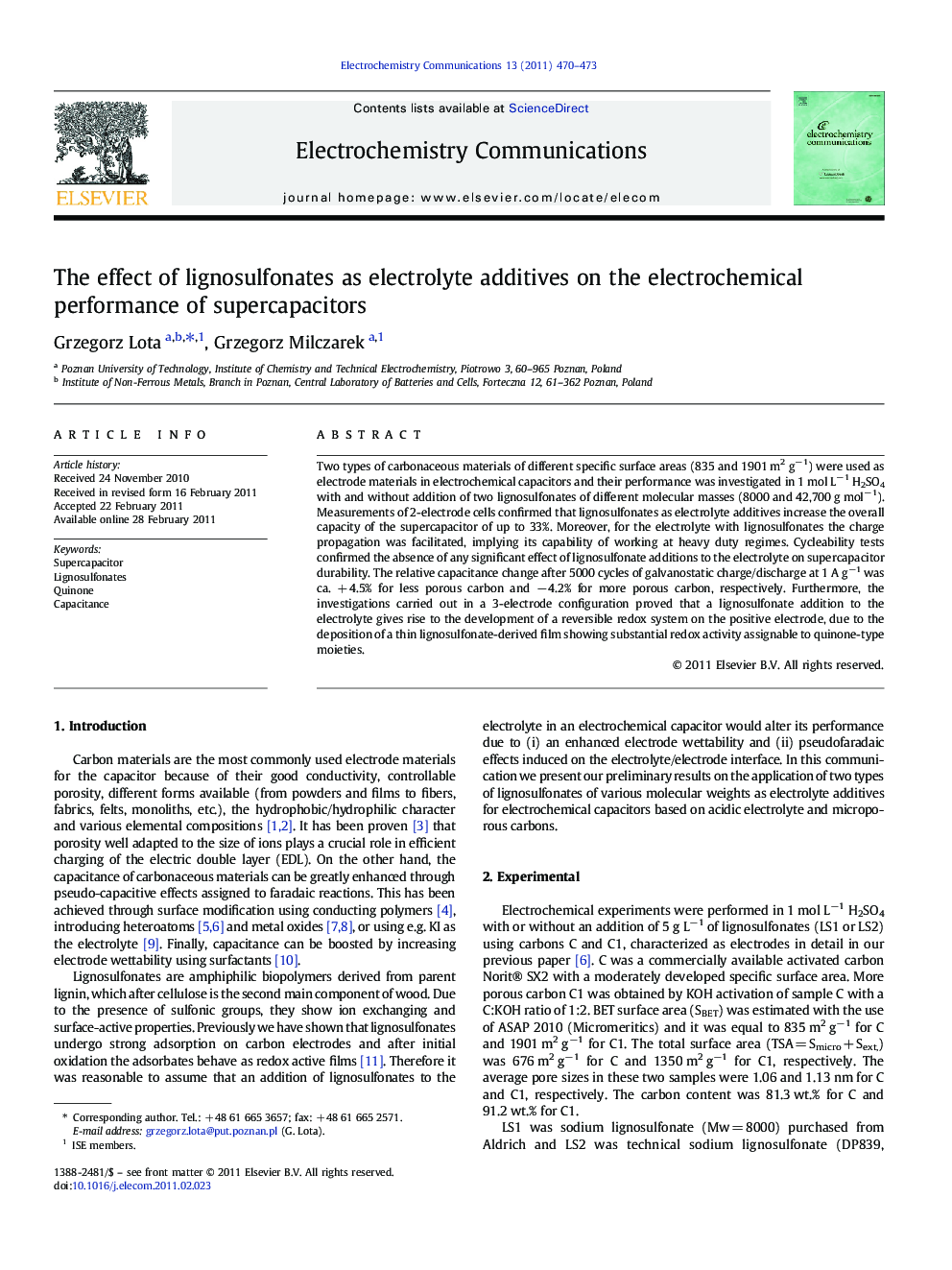| Article ID | Journal | Published Year | Pages | File Type |
|---|---|---|---|---|
| 180086 | Electrochemistry Communications | 2011 | 4 Pages |
Two types of carbonaceous materials of different specific surface areas (835 and 1901 m2 g−1) were used as electrode materials in electrochemical capacitors and their performance was investigated in 1 mol L−1 H2SO4 with and without addition of two lignosulfonates of different molecular masses (8000 and 42,700 g mol−1). Measurements of 2-electrode cells confirmed that lignosulfonates as electrolyte additives increase the overall capacity of the supercapacitor of up to 33%. Moreover, for the electrolyte with lignosulfonates the charge propagation was facilitated, implying its capability of working at heavy duty regimes. Cycleability tests confirmed the absence of any significant effect of lignosulfonate additions to the electrolyte on supercapacitor durability. The relative capacitance change after 5000 cycles of galvanostatic charge/discharge at 1 A g−1 was ca. + 4.5% for less porous carbon and − 4.2% for more porous carbon, respectively. Furthermore, the investigations carried out in a 3-electrode configuration proved that a lignosulfonate addition to the electrolyte gives rise to the development of a reversible redox system on the positive electrode, due to the deposition of a thin lignosulfonate-derived film showing substantial redox activity assignable to quinone-type moieties.
Research highlights► Lignosulfonates improve overall capacity of supercapacitors. ► Lignosulfonates induce pseudo-capacitive effects. ► Lignosulfonates develop a reversible redox system on the positive electrode. ► The presence of lignosulfonates in the electrolyte does not impede cycleability.
